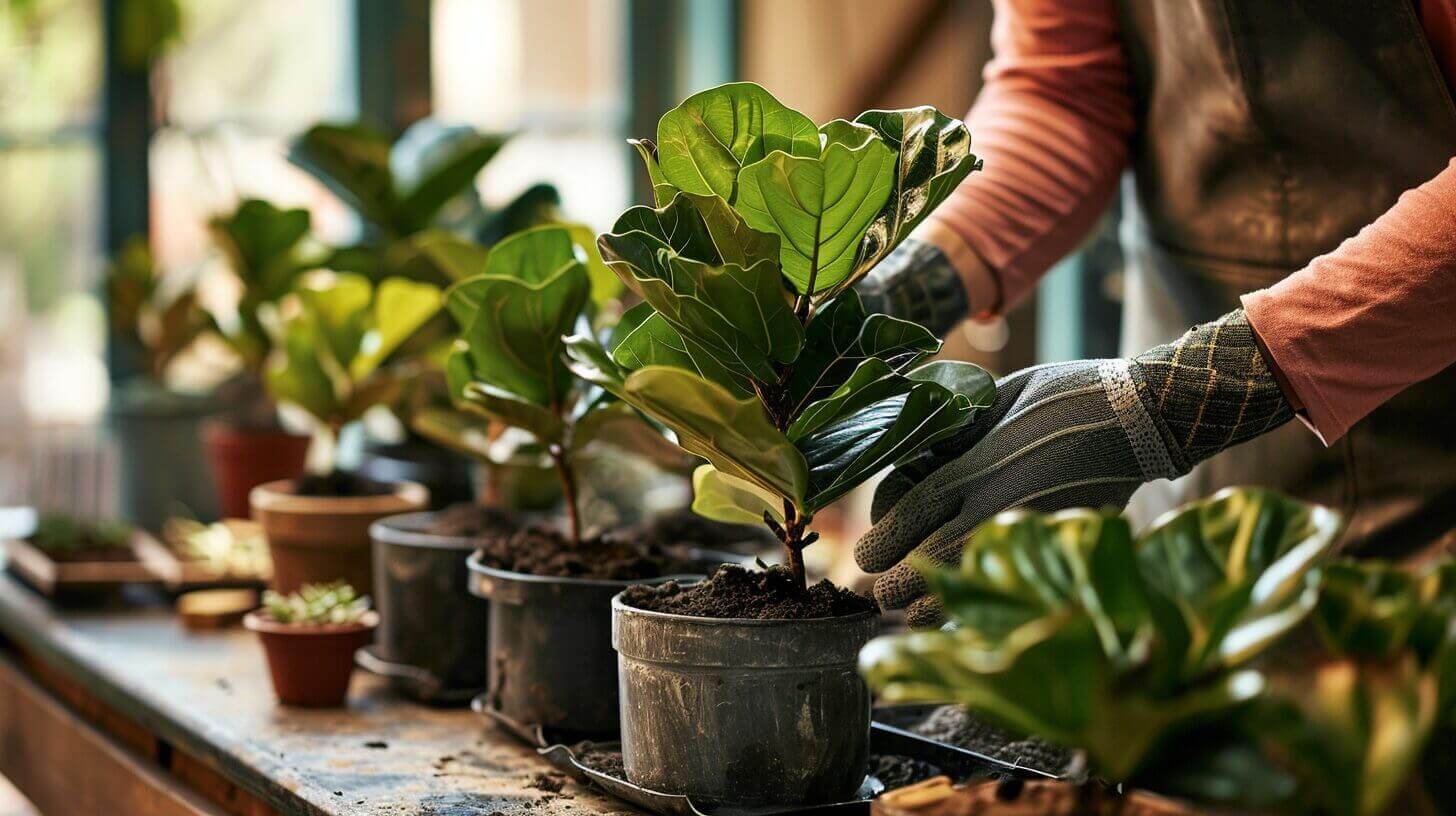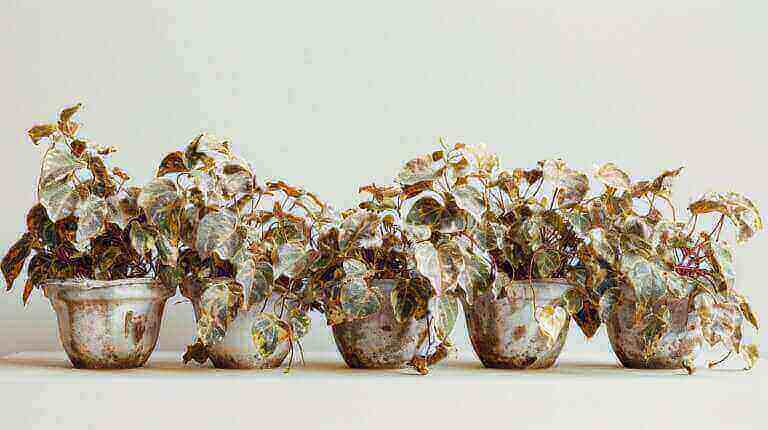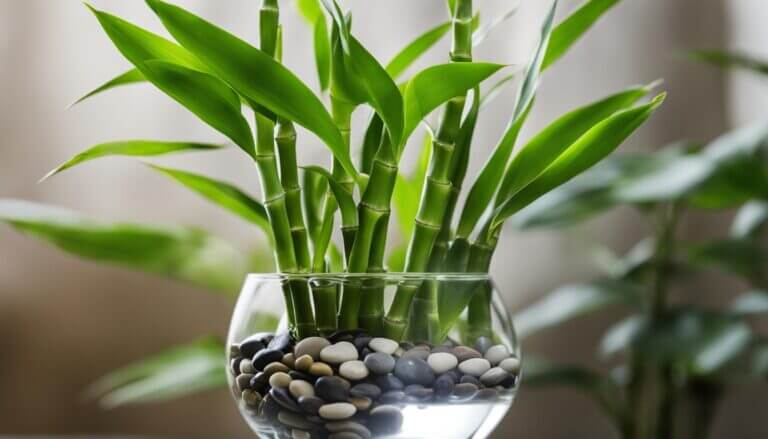How to Repot A Fiddle Leaf Fig Tree: Soil, Pot Size, and Care Tips
When it comes to planting a fiddle leaf fig plant(ficus lyrata), there are key factors to consider, including the soil, pot size, and care. By understanding these elements, you can ensure that your fiddle leaf fig thrives and brings beauty to your indoor space. Here is a comprehensive guide to help you plant and care for your fiddle leaf fig.
Key Takeaways:
- Choose a pot that is 1/3 the size of your fiddle leaf fig to maintain the right plant-to-pot ratio.
- Use well-draining soil with organic matter, such as a peat-based mix with perlite, to provide the right moisture control.
- Avoid adding gravel or rocks to the pot for drainage, as it can lead to root rot.
- When repotting, choose a larger pot that is 3-4 inches wider in diameter than the current pot.
- After repotting, water your fiddle leaf fig when the top inch of soil feels dry and provide adequate sunlight and pruning to promote growth.
Choosing the Right Container Size for Your Fiddle Leaf Fig(Ficus Lyrata)
When it comes to planting a fiddle leaf fig indoor plant, selecting the appropriate container size is crucial for the health and growth of your plant. While the general recommendation is to choose a pot that is 1-2 inches larger in diameter than the current pot, this may not always be sufficient, especially for larger plants.
Instead of relying solely on incremental increases in pot size, it is important to consider the plant-to-pot ratio. A good guideline is to aim for a pot that is approximately 1/3 the size of the overall plant. This ratio helps ensure that the fiddle leaf fig has enough space for its roots to grow while still providing stability and support.
By following this ratio, you can prevent the common problem of overpotting or underpotting. Overpotting, where the pot is too large for the plant, can lead to excess moisture retention and potentially root rot. On the other hand, underpotting, where the pot is too small, can restrict root growth and hinder the overall health of the plant.
Choosing the Right Container Size: A Guide
| Plant Height | Ideal Pot Diameter |
|---|---|
| 6-12 inches | 4-6 inches |
| 12-24 inches | 6-8 inches |
| 24-36 inches | 10-12 inches |
| 36-48 inches | 12-14 inches |
Keep in mind that as your fiddle leaf fig grows, you may need to repot it into a larger container to accommodate its increasing root system. Regularly check the root system for circling or bound roots, as this can indicate the need for a larger pot.
Choosing the right container size for your fiddle leaf fig is an important step in its overall care. By following the plant-to-pot ratio and considering the size of your plant, you can ensure that your fiddle leaf fig has the proper space to thrive and grow.
Using the Right Potting Soil and Ensuring Proper Drainage
When it comes to planting and caring for your fiddle leaf fig, one of the most important factors to consider is the soil and drainage. Proper soil composition and good drainage are essential for the health and growth of your plant. Let’s explore some key considerations to keep in mind:
Choosing the Right Soil
Fiddle leaf figs thrive in well-draining potting soil that is rich in organic matter. A suitable blend consists of peat-based soil with perlite, which helps maintain the ideal balance of moisture and air circulation. Avoid using soil from your yard or succulent soil, as they may not provide the necessary properties for optimal growth.
Importance of Proper Drainage
Ensuring proper drainage is crucial for preventing root rot and other water-related issues. While it may be tempting to add gravel or rocks to the bottom of the pot for drainage, this can actually hinder drainage and increase water saturation. Instead, opt for a pot with drainage holes and use a well-draining potting mix to promote healthy root development.
Remember, fiddle leaf figs are native to rainforest environments where they receive consistent moisture but also dry out between watering. Providing them with a suitable soil and proper drainage will mimic these conditions and help your plant thrive.
Avoiding Common Mistakes
As you care for your fiddle leaf fig, it’s important to avoid some common mistakes that can affect the soil and drainage. Here are a few things to keep in mind:
- Avoid overwatering, as this can lead to soggy soil and root rot. Only water when the top inch of soil feels dry.
- Avoid underwatering as well, as this can cause stress and hinder growth. Monitor the moisture levels and adjust your watering routine accordingly.
- Choose an appropriate pot size. An oversized pot can retain excess moisture, while an undersized pot can restrict root growth. Aim for a pot that allows for proper drainage and accommodates the size of your plant.
By using the right soil and ensuring proper drainage, you’ll create an optimal environment for your fiddle leaf fig to thrive and flourish.
| Pros of Using a Well-Draining Potting Mix | Cons of Using Unsuitable Soil |
|---|---|
| Allows for proper root aeration | May lead to root rot and other water-related issues |
| Prevents excessive moisture retention | Can hinder growth and cause the plant to become stressed |
| Promotes healthy root development | May restrict root growth and result in a stunted plant |
Repotting Your Fiddle Leaf Fig Plant: Step-by-Step Guide
Repotting your fiddle leaf fig is a crucial step in ensuring its continued health and growth. Follow these simple steps to repot your plant and provide it with a fresh environment to thrive in:
- Choose a larger pot: Select a pot that is 3-4 inches wider in diameter than the current one. This will give your fiddle leaf fig enough space to grow its roots.
- Prepare the new pot: Fill the new container with a well-draining potting mix, ensuring that it is suitable for fiddle leaf figs. A mix that includes peat and perlite is a good option.
- Remove the plant from its current pot: Gently loosen the soil around the plant’s roots and carefully lift it out of the pot. Be cautious not to damage the roots during this process.
- Place the plant in the new pot: Position the fiddle leaf fig in the center of the new pot, ensuring that it is upright. Add additional potting mix around the sides, gently pressing it down to secure the plant in place.
- Water the plant: After repotting, give your fiddle leaf fig a thorough watering to help settle the soil and hydrate the roots. Allow the water to drain out completely before bringing the plant indoors.
By following these steps, you can repot your fiddle leaf fig successfully and provide it with a fresh start. It is important to give the plant some time to adjust to its new pot before expecting any significant growth. Monitor its condition regularly and adjust your care routine as needed to ensure the best possible environment for your fiddle leaf fig to thrive.
| Benefits of Repotting Your Fiddle Leaf Fig | Considerations |
|---|---|
| Allows the plant to grow larger | Choose the right pot size to avoid overpotting |
| Refreshes the soil and provides fresh nutrients | Transplant during the plant’s active growth phase |
| Prevents root-bound issues and promotes healthier roots | Handle the roots with care during the repotting process |
Remember to repot your fiddle leaf fig every 1-2 years to ensure its continued well-being. With the right pot size, proper technique, and appropriate care, your fiddle leaf fig will flourish in its new home, bringing beauty and greenery to your indoor space.
Caring for Your Newly Repotted Fiddle Leaf Fig
Now that you have successfully repotted your fiddle leaf fig, it’s important to provide the right care to help it thrive in its new pot. Follow these tips to ensure the continued growth and health of your beloved plant.
Watering: Proper watering is crucial for your fiddle leaf fig. Check the moisture level by inserting your finger about an inch into the soil. If it feels dry, it’s time to water. Be sure not to overwater, as this can lead to root rot. Allow the water to drain completely before placing the pot back in its saucer.
Light: Fiddle leaf figs love bright, indirect light. Place your plant near a window with filtered sunlight or use sheer curtains to diffuse direct sunlight. Rotate the pot occasionally to ensure even growth. Remember, insufficient light can cause your fiddle leaf fig to become leggy and stretch towards the light source.
Fertilizing: To keep your fiddle leaf fig healthy and thriving, fertilize it regularly during the growing season. Use a balanced, water-soluble fertilizer specifically formulated for houseplants. Follow the instructions on the packaging for the correct dosage and frequency. Avoid over-fertilizing, as this can lead to salt buildup and damage the roots.
Pruning: Pruning is essential to maintain the shape and encourage new growth in your fiddle leaf fig. Remove any yellow or brown leaves, as they indicate a lack of health. Trim back leggy stems to promote bushier growth. Make sure to use clean, sharp pruning shears to prevent the spread of diseases.
Sunlight: Fiddle leaf figs thrive in bright, indirect sunlight. Find a spot in your home where your plant can receive at least six hours of filtered sunlight per day. Avoid placing it in direct sunlight, as this can scorch the leaves. If necessary, supplement the natural light with a grow light to ensure your fiddle leaf fig gets the light it needs.
By following these care tips, you can ensure that your newly repotted fiddle leaf fig stays healthy and flourishes in its new container. With proper watering, adequate sunlight, regular fertilizing, and occasional pruning, your fiddle leaf fig will continue to add beauty to your indoor space for years to come.
FAQ
How often should I water my fiddle leaf fig tree?
Water your fiddle leaf fig tree when the top 2-3 inches of soil are dry. Stick your finger into the soil to check for moisture before watering, and adjust based on the plant’s specific needs.
When does a fiddle leaf fig tree need to be repotted?
Typically, a fiddle leaf fig tree needs to be repotted every 1-2 years or when you notice the roots becoming root-bound. Signs of a plant needing repotting include roots emerging from the drainage holes or the plant becoming top-heavy.
Can I use a decorative pot for my fiddle leaf fig tree?
Yes, you can use a decorative pot for your fiddle leaf fig tree, but ensure that the decorative pot has drainage holes. Place the plastic nursery pot with the plant inside the decorative pot to ensure proper drainage.
What should I do with the old soil when repotting a fiddle leaf fig tree?
When repotting your fiddle leaf fig tree, gently shake off the old soil from the roots and add fresh soil mix to the new pot. You can discard the old soil or repurpose it for other plants or outdoor gardening projects.







